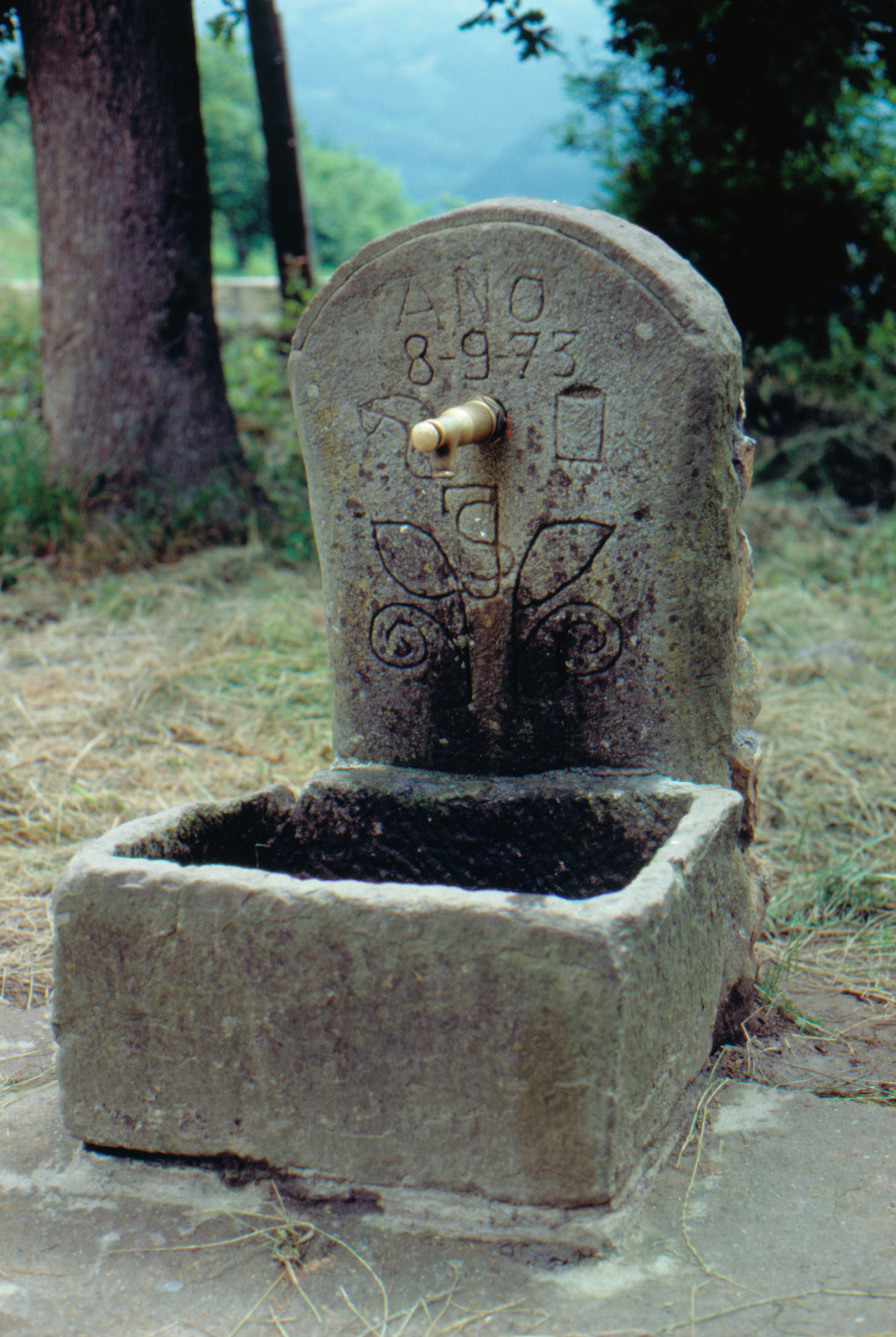Basque ethnography at a glance

Fountain next to St John’s hermitage in Garai (Bizkaia), seat of the brotherhood of Momoitio. José Ignacio García Muñoz. Labayru Fundazioa Photographic Archive.
Many of the popular beliefs and rites surrounding St John’s Day (Doniane, in Basque) on 24 June are reminiscent of ancient summer solstice celebrations and cults.
Above and beyond the traditional bonfires still lit at dusk on the eve, back in the days when society lived in closer contact with nature, other elements of our environment acquired on the day a new healthy vigour. So it was with the water from sources and rivers, the morning dew, the trees, the grasses and the flowers.
Those were longstanding and fairly widespread beliefs and rites.
Already in the 4th century Saint Augustine (353-420), then bishop of Hippo Regius, a city sitting on the Mediterranean coast of the Roman province of Numidia in Africa, reprimanded Christians for following the pagan ritual of taking a bath in the sea on St John’s Day (Sermo 196: 4). Saint Augustine was not a man to be scandalised by an old custom, yet he did not want Christians under his ministry to attribute to it a sanctifying value comparable to that of baptismal bathing.

St John’s hermitage in Garai (Bizkaia). José Ignacio García Muñoz. Labayru Fundazioa Photographic Archive.
However, when Christian culture fully established in the western world, many of the old beliefs persisted, though subordinated to the Christian faith. Thus, many of our hermitages dedicated to Saint John the Baptist are located in the proximity of a source the faithful flock to at the crack of dawn on the feast day to drink its water.
In times gone by, according to Barandiaran, it was customary to bathe in the river or walk barefoot or naked on grasslands or wheat fields watered by the dew of the morning. The practice was based on the belief that on midsummer morning, before the sun rises, the waters are blessed and have the power to cure skin illnesses such as herpes or scabies.
As far as our country is concerned, the practice extended to all regions of the territory: Valley of Carranza, Valley of Arratia, Durango and environs, Goierri (Gipuzkoa), Valley of Aezkoa, Valley of Salazar, and the Northern Basque Country, including Azkaine, Uhartehiri and Liginaga.
Ander Manterola – Etniker Bizkaia – Director of the Ethnographic Atlas of the Basque Country
Translated by Jaione Bilbao – Language Department – Labayru Fundazioa
Reference for further information: Popular Medicine, part of the Ethnographic Atlas of the Basque Country collection.

